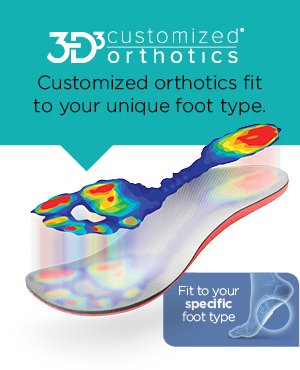HEEL PAIN & HEEL SPURS
Learn more about diagnosis, treatment, and prevention
Could I have Heel pain?
Could it be caused by heel spurs?
Heel pain, a common foot complaint among athletes and non-athletes alike, may occur for a variety of reasons, including heel spurs. Review the possible causes and symptoms to find out more about the source of your heel pain.
What are the causes and symptoms
Plantar fascia—the band of connective tissue on the bottom of your foot that stretches from the heel to the ball of your foot—supports your foot’s arch. If this tissue becomes inflamed, you’ll generally feel the pain in your heel. Eventually, hook-shaped calcium deposits, also known as bone or heel spurs, may form on your heel bone and cause further pain.
Structural issues with the arch of your foot can lead to this cycle of inflammation, spur growth, and pain. Flat feet, characterized by a collapsed arch, force the plantar fascia and surrounding muscles to absorb the pressure put on your feet by walking and standing. As a result, your feet become inflamed.
The experts at FootSmart and the Running Injury Clinic agree that your heel pain will likely be worse when your foot and calf muscles are tight, such as when you:
- First get out of bed in the morning.
- Stand after sitting at your desk or in your car for a long time.
- Exercise without warming up first.
The shortened muscles pull on the heel spur and plantar fascia, causing immediate, sharp pain when you put pressure on your feet.
Think your heel pain may be serious?
TAKE THIS SELF-ASSESSMENT
Self- Assessment Quiz
Do I feel heel pain?
- With the first few steps I take after getting out of bed in the morning?
- When I resume activity after sitting for a long period of time?
- After standing or walking for a long period of time?
- At the very beginning of an exercise session?
If you answered “yes” to any of these questions, or if you have ever been diagnosed with flat feet, your heel pain may be caused by heel spurs or an inflamed plantar fascia. Heel spurs can only be seen on an X-ray, so consult with your foot and ankle specialist for a definitive diagnosis. In the meantime, keep reading for recommendations on treatment and prevention of heel pain from the experts at FootSmart and the Running Injury Clinic.
Are there any serious concerns with Heel Pain?
If left untreated, your heel pain will likely grow worse over time. It can even become disabling, preventing you from enjoying your normal activities. For instance, if your job requires you to stand up for long periods of time, your persistent heel pain should remind you to seek treatment as soon as possible to put you on the road to recovery.
How do I treat and prevent heel pain?
Your heel pain won’t go away on its own. In fact, it may get worse over time if left untreated. You have many options for treating and even preventing heel pain caused by heel spurs or an inflamed plantar fascia.
Start your pain treatment and prevention with these conservative methods:
- Rest your feet as much as possible for a few days. Try to refrain from activities, like running and prolonged standing or walking, that tend to aggravate your pain.
- Ice your heels to reduce inflammation and pain.
- Give your feet extra support with supportive shoes, over-the-counter orthotics, heel pads or cushions, or arch supports that help relieve pressure on your plantar fascia and heel.
- Stretch your calf muscles to reduce the muscle tightness that inflames your plantar fascia. Keep your calf muscles and plantar fascia stretched out overnight by using a night splint.
If you're still feeling pain, try this next level of treatment and prevention:
- Order custom orthotics through your podiatrist. These rigid shoe inserts realign your foot and provide stable arch support to relieve inflammation and pain.
- Ask your podiatrist about steroid injections that can temporarily relieve your inflammation and pain.
- Strengthen the muscles that help support your arch and plantar fascia.
Although less than 10 percent of heel spur sufferers require the last level of treatment—surgery—ask your podiatrist about this option if none of these at-home treatments have worked for you.

